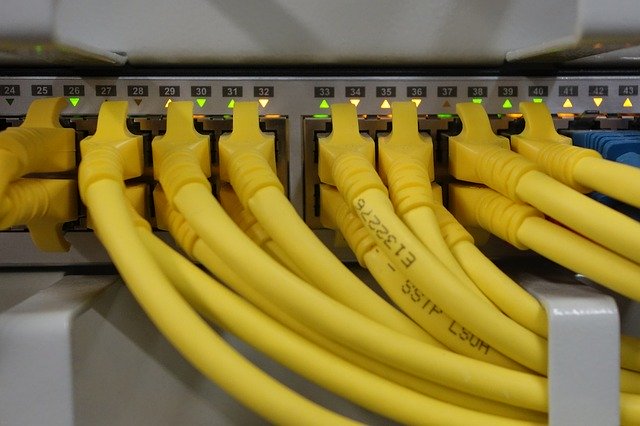
At the start of the week an issue arose which appeared to impact on a number of schools, in relation to syncing of OneNote on iPads or where using the Win 10 OneNote app. This got me to thinking, should we be concerned where we are increasingly having all our technology eggs in one basket, being either the Microsoft Office 365 or Google Workspace for Education baskets.
Benefits
First, I think it’s important to acknowledge the benefits of having your eggs in one basket. Taking Office 365, which is the solution my school uses, one of the key benefits is integration. Each of the apps integrates well with the others, be this using Outlook to setup Teams meetings or setting up a Microsoft Form based quiz, as an assignment in Teams. As each of the apps are part of the same wider platform, they generally play well together. As soon as you start to look at number of different apps from different vendors, integration and interoperability very quickly become problems.
User interface is another significant benefit. Each of the Office 365 apps, as part of the wider platform, has a reasonably common user interface. This makes it that bit easier for users, both staff and students, to gain familiarity and confidence in using each app and the overall platform. Again, as soon as we look to different vendors, we find ourselves with different user interfaces across different apps, and therefore an increased learning curve for staff and students.
Security is also worth remembering. As a single unified platform, I consider it easier, but not necessarily easy, to secure Office 365 versus similarly securing a number of platforms from different vendors, with integrations and potentially third party integrators involved.
Drawbacks
The key draw back is the single point of failure. When it doesn’t work the impact is huge. Now in the recent case it was only OneNote which experienced an issue so staff and students could still make use of Teams, OneDrive, email, etc. This is a lesser issue. Had the issue related to the Office 365 platform as a whole then all apps within the platform would therefore be affected. Thankfully, given the size of Microsoft, they have backups and resiliencies in place to reduce the likelihood of such an issue, however statistically over a longitudinal period the likelihood of such an incident eventually reaches 100%. I would however suggest the exact same is the case where using multiple vendors to supply your solutions, however given the complexity of different systems and the resultant integrations required I would suggest the time period in this case before probability reaches 100% is much less, therefore representing a more significant risk.
It is also worth noting that where we are referring to SaaS (Software as a Service) there is also a risk that the vendor might choose to change the service such that it no longer meets our needs or may even discontinue the service. In both these cases we find ourselves in the difficult situation of needing to find an alternative and needing to migrate potentially massive amounts of data. With Google and Microsofts productivity suites I would say the risk here is minor, however the possibility that an individual app within the wider platform may change or be discontinued is a more likely occurrence.
Conclusion
I don’t believe there is a perfect solution. If you wanted to protect against a single point of failure, and having all your eggs in one basket, you would use more than one system, possibly using Microsoft as primary with Google as a secondary solution. The issue here is that of resources and that of users. Managing two platforms, keeping one ready to use if needed, and ensuring staff are ready to use the alternative platform will take at least twice as much in the way of IT support resources. I would also suggest it is highly unlikely you could train users up to be able to be capable across two platforms. I think even trying to do this would impact on users confidence across both platforms. And this is without mentioning potential cost and financial implications.
Alternatively using different vendors for your video calls, emails, collaboration, etc and splitting up the functionality of your solutions is equally unlikely to work due to usability but also due to complexity and resultant fragility of combined systems, with each vendor focussed on their platform and not on others, or on the integrations you may have between platforms.
In Microsoft we trust
This brings me back to an acceptance that the benefits of having all my eggs in one basket, a Microsoft basket in this case, provides more benefits than risks. It offers easier management, usability and security.
That said, it doesn’t hurt to have a little bit of insurance and to have the basics of Google in place just in case; Yes it may not be ready to go, so may take some time to setup, but at least having it around means it is there should the worst ever happen.


 As we use more and more cloud services, internet access and school internet provision becomes critically important. Due to the critical nature of internet access, when looking at Internet service provision, firewalls and core switches, the two main focal areas I would consider are doubling up where finances allow or carefully examining the service level agreement along with any penalties proposed for where service levels are not met. In the case of firewalls and core switches, cold spares with a lower specification may also be an option to minimize cost but allow for quick recovery in the event of any issue. When looking at the SLAs of providers in terms of their support offering for when things go wrong consider, is it next business day on-site support or return to base for example and how long their anticipated recovery period is.
As we use more and more cloud services, internet access and school internet provision becomes critically important. Due to the critical nature of internet access, when looking at Internet service provision, firewalls and core switches, the two main focal areas I would consider are doubling up where finances allow or carefully examining the service level agreement along with any penalties proposed for where service levels are not met. In the case of firewalls and core switches, cold spares with a lower specification may also be an option to minimize cost but allow for quick recovery in the event of any issue. When looking at the SLAs of providers in terms of their support offering for when things go wrong consider, is it next business day on-site support or return to base for example and how long their anticipated recovery period is. In the case of edge switches and Wi-Fi Access Points we are likely to have large numbers especially for larger sites. I would suggest that heat mapping for Wi-Fi is key at the outset of a Wi-Fi deployment, in making sure Wi-Fi will work across the site. In looking at resiliency for when things go wrong my view is an N+1 approach. This involves establishing a spare or quantity of spares based on the total number of units in use and the level of risk which is deemed acceptable. High levels of risk acceptance mean fewer spares, whereas a low level of risk acceptance may lead to a greater number of spares.
In the case of edge switches and Wi-Fi Access Points we are likely to have large numbers especially for larger sites. I would suggest that heat mapping for Wi-Fi is key at the outset of a Wi-Fi deployment, in making sure Wi-Fi will work across the site. In looking at resiliency for when things go wrong my view is an N+1 approach. This involves establishing a spare or quantity of spares based on the total number of units in use and the level of risk which is deemed acceptable. High levels of risk acceptance mean fewer spares, whereas a low level of risk acceptance may lead to a greater number of spares. Cables break plus various small animals love to chew on cables given half a chance.
Cables break plus various small animals love to chew on cables given half a chance. I was reflecting on August 2018 and I came across my post on
I was reflecting on August 2018 and I came across my post on  The World cup has started and I am sure classrooms all over the world will be seeing football related themes, examples, etc. in use as teachers seek to engage students and contextualise learning. As I sat watching the Spain vs. Portugal game I identified one particular opportunity where football could be used to share an important piece of learning.
The World cup has started and I am sure classrooms all over the world will be seeing football related themes, examples, etc. in use as teachers seek to engage students and contextualise learning. As I sat watching the Spain vs. Portugal game I identified one particular opportunity where football could be used to share an important piece of learning.